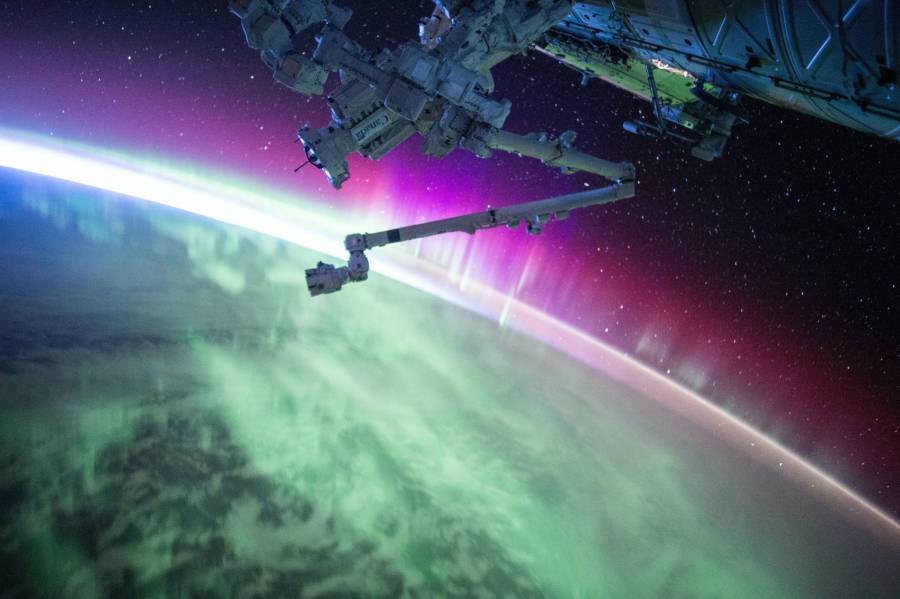New opportunities for both space exploration and defense are emerging as the aerospace industry undergoes radical transformation. Steve Isakowitz, CEO of The Aerospace Corporation, believes that artificial intelligence (AI) controlled satellites and permanent habitation of the Moon and Mars are in the cards for the future of space exploration and defense. Isakowitz argues that AI satellites have the potential to make satellites more self-sufficient and safer from potential collisions with other spacecraft.
Improved communication, navigation, and remote sensing have all been made possible by satellites. Due to the long delays in transmission times between Mars rovers and Earth, AI technology has been used for quite some time. In order to overcome the setback, the rover needed guidance on where to go and how to get there safely. Satellites in Earth’s orbit can now carry cutting-edge AI technology because of advances in AI and the miniaturization and decreasing cost of computer chips.
According to Isakowitz, we are on the cusp of an era in which hyper-intelligent satellites will become commonplace, transforming them from passive observers of Earth into ubiquitous surveillance cameras. They could be instructed on what to look for instead. Several satellites could form a ‘cluster’ and work together to accomplish a goal. Moreover, satellites might be equipped with autonomous capabilities that allow them to recognize when a component of its infrastructure is failing or communicate with other swarms of satellites.
There are currently more operational satellites in Earth’s orbit than ever before. In 2018, there were 2,027 operational satellites in Earth’s orbit. According to Statista, that figure jumped to 6,905 in 2022. The increasing number of satellites and other objects in Earth orbit poses a growing risk of collision. Aerospace companies want to create satellite networks that can share information and cooperate to achieve a common goal.
A permanent human presence on the Moon and Mars is a goal of the aerospace industry. Isakowitz claims that the current space programs’ aims are very different from those of previous decades. There are now many more players in space, including not only the U.S. government and commercial but also international groups, than in the early days of NASA and other space-related ventures, when the emphasis was on the “cutting edge of the frontier” and on being the first.
The aerospace sector hopes to eventually set up long-term operations on the Moon. Because of its abundance of water, the Moon could support life and even produce rocket fuel powerful enough to keep significant activity going there. In addition, having access to plentiful water supplies would lay the groundwork for us to figure out Mars travel. According to Isakowitz, they plan to revisit the regions of the Moon, especially the South Pole, where they believe water resources may be located.
According to Isakowitz, humans will colonize Mars and establish themselves there within the next 15 to 20 years. The aerospace business is keen on setting up long-term operations on the red planet. In order to do so, they must learn about the local ecosystem and its available resources. Isakowitz claims that humans should first head to Mars because it is the nearest habitable planet to Earth.
There have been great advances in aerospace technology for both space exploration and defense. The high price of space travel, however, has prevented widespread participation. Isakowitz equated space travel to the introduction of any novel technological device. The price gradually decreases in response to rising demand.
Isakowitz predicted that the cost of space travel for the average citizen could drop significantly if technological progress was accelerated rapidly. Demand increases as more people decide they want to take advantage of the convenience, speed, and safety of air travel. To make space travel more affordable and accessible, the aerospace industry is constantly researching and testing new technologies.
New opportunities for both space exploration and defense are emerging as the aerospace industry undergoes radical transformation. Future developments in Aerospace include artificial intelligence-operated satellites and long-term human settlements on the Moon and Mars. To make space travel more affordable and accessible, the industry is actively seeking out new technologies.
Isakowitz coined the phrase “the opening of the frontier of space” to describe the current era, which has seen a dramatic decrease in the price of space travel and an increase in the capabilities of satellites. The aerospace sector is aiming to create satellite networks capable of collaborating, exchanging data, and working toward a common goal.
In summary, radical shifts in the aerospace industry are allowing for previously unimaginable developments in both peaceful and military uses of space. Future developments in Aerospace include artificial intelligence-operated satellites and long-term human settlements on the Moon and Mars. To make space travel more affordable and accessible, the industry is actively seeking out new technologies. The Aerospace industry is primed to make major advances in space exploration and defense as we enter a new era, clearing the way for future generations to venture forth into the unknown.
First reported on Fox News
Frequently Asked Questions
Q: What is the role of artificial intelligence (AI) in the aerospace industry?
A: AI is playing a significant role in the aerospace industry, particularly in satellite technology. AI-controlled satellites have the potential to enhance satellite autonomy and safety, making them more self-sufficient and reducing the risk of collisions with other spacecraft. AI is also used in Mars rovers to enable autonomous navigation and decision-making due to the long transmission delays between Mars and Earth.
Q: How can AI transform satellites?
A: AI can transform satellites from passive observers to active participants. With AI technology, satellites can be instructed on what to look for, work together in clusters, and recognize infrastructure failures or communicate with other satellite swarms. This transformation allows for more intelligent and collaborative satellite networks.
Q: What is the current state of satellites in Earth’s orbit?
A: The number of operational satellites in Earth’s orbit has significantly increased in recent years. In 2018, there were 2,027 operational satellites, and by 2022, this number rose to 6,905. The growing number of satellites and objects in orbit poses a higher risk of collisions, leading aerospace companies to develop satellite networks that can share information and cooperate.
Q: What are the goals of the aerospace industry regarding space exploration and colonization?
A: The aerospace industry aims to establish permanent human presence on the Moon and Mars. The Moon, with its potential water resources, could support life and serve as a stepping stone for Mars travel. The industry plans to revisit Moon regions, particularly the South Pole, to explore water resources. They also anticipate human colonization of Mars within the next 15 to 20 years due to its proximity and habitability compared to other planets.
Q: How does the aerospace industry envision making space travel more affordable and accessible?
A: The aerospace industry acknowledges the high cost of space travel as a barrier to widespread participation. However, they believe that technological progress and increased demand will lead to reduced costs. As more people seek the convenience, speed, and safety of air travel, demand for space travel is expected to rise, prompting the industry to research and test new technologies to make it more affordable and accessible.
Featured Image Credit: Unsplash


























